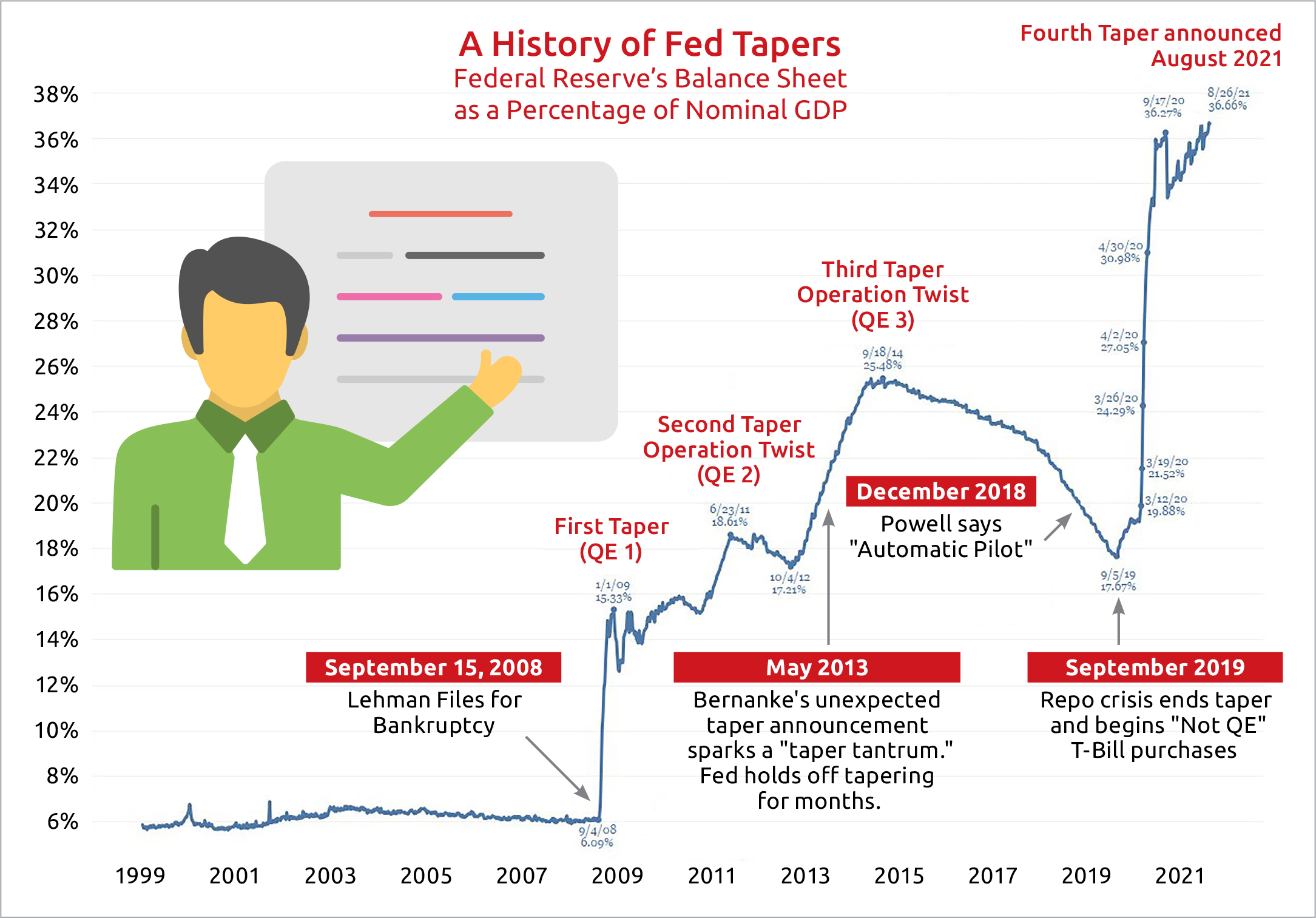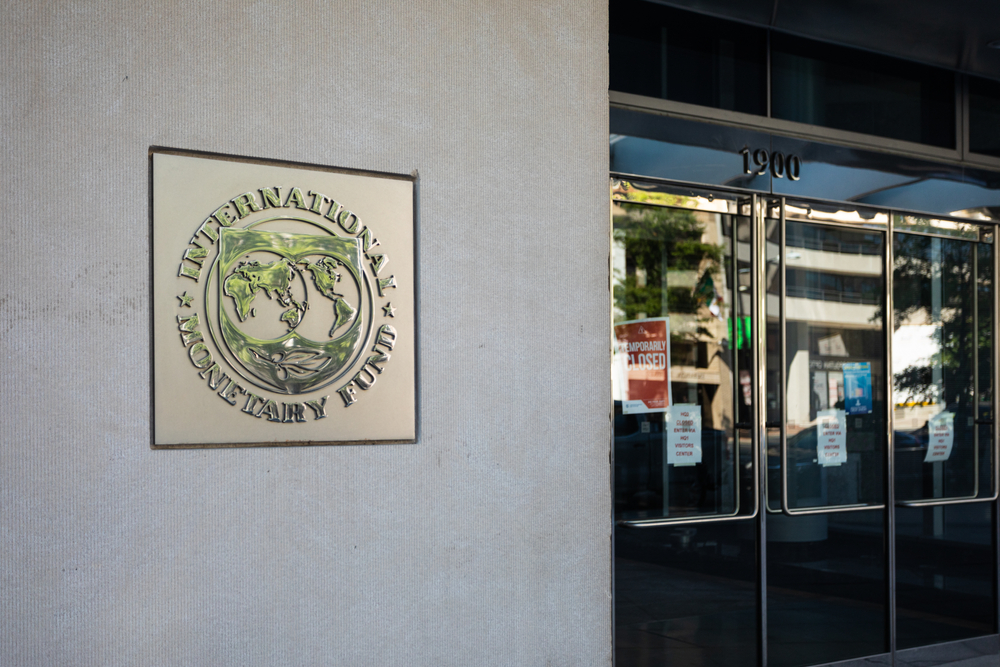Beware: Era of Negative Real Interest Rates Likely Ahead

With the long-term trend in interest rates down and inflation trending upward (alas, with increasing signs of not being transitory), more and more debt instruments have increasingly negative real interest rates, Les Nemethy and François Lesegretain warn.
“Bonds are not the place to be these days [….]. Fixed-income investors worldwide, whether pension funds, insurance companies or retirees, face a bleak future,” according to Warren Buffet. Even nominal yields are increasingly negative.
The first part of this article deals with why this trend is likely to continue or even be accentuated. The second part deals with how to protect yourself in this type of environment.
So, why are negative real interest rates here to stay? In a nutshell, the debt spiral and money printing have already gone beyond control. With total global debt at more than 350% of global GDP, U.S. Government debt at more than 160% of U.S. GDP, and Japanese Government debt at more than 230% of GDP, to name a few, governments find it difficult to escape increasing deficit spending. Despite record low-interest rates, Japan spends more than 20% of its GDP on servicing interest costs.
The chart shows a pattern of asset increases on the balance sheet of the U.S. Federal Reserve, which has purchased bonds and other assets as a way of lowering yields.
Over the past decade, there have already been four attempts to reverse the trend, each resulting in a “tantrum” (e.g., where markets crash, necessitating massively increased stimulus to resuscitate the economy).
With governments, corporations, and individuals all addicted to debt, the only real option for central banks is to let inflation run at least 3-4% higher than interest rates so that they can inflate their way out of the debt mountain. There is precedent for this: The United States pursued precisely this strategy to handle the debt amassed during World War II.
Helicopter Money
Given that monetary policy (low-interest rates and buying bonds as controlled by central banks) is reaching its limits, governments are also getting into the act of stimulus via so-called helicopter money and deficit spending.
Governments are also guaranteeing loans given by banks, meaning that there may be a dramatic increase in bank lending, through which new money will be created.
Manufacturers are beginning to feel acute shortages of inputs, from steel to microchips. Container shipping costs are skyrocketing; labor shortages are popping up all over. The velocity of money has fallen so low over the past decade; it has nowhere to go but up, once again fueling inflation.
How can you protect yourself in this environment? The current investing environment has been called many things, from the “everything bubble” to the “Powell Put.”
Inflation turns cash into trash: Pensions are likely to be ravaged by inflation. Under these circumstances, where does one park one’s wealth? This is perhaps the most pressing issue facing investors in an inflationary environment. There is a hunger for yield, which is what drives most valuations to the stratosphere.
We see three outlets for cash in this environment:
1. Physical assets, including real estate, farmland, etc.
2. Company shares.
3. Commodities, and within that, bullion.
Notice that bonds are not on my list. Someone who buys bonds with ultralow yields collects puny interest in exchange for taking substantial risk that higher inflation or a surge in rates could more than wipe out gains.
Knowledge and Quality
But it is important to note that there is a search for quality within each of the above three asset classes, and knowledge of each market becomes essential; it is all-too-easy to find real estate, publicly listed shares, or commodities that will perform poorly in the coming years.
But if you have the time and knowledge to search out quality shares or real estate that produces cash flow, is well managed, and is likely to produce ever-increasing cash flows, there is a good chance that value will improve with the value of inflation or at least to produce better results than holding cash.
Of course, if you believe that markets may crash in the near future, it may make sense to hold some cash to have the liquidity to take advantage of bargains.
Bullion is a bit of a different situation. It is perhaps the only primary asset class that, in our opinion, is undervalued in this environment, possibly the only asset class which the “everything bubble” has bypassed. That is an interesting phenomenon, given that bullion tends to perform very well in an inflationary, negative real interest rate environment. It makes sense to hold at least a small percentage of one’s portfolio in bullion.
• For central banks, this means an increase in the concentration of gold reserves. In 1980, banks used to hold more than 70% of their reserves in gold; by 2005, this had decreased to less than 5%. It is now on the rise again.
• For individuals and corporations, rather than having negative interest rate instruments, bullion becomes more attractive.
We live in interesting times, as the saying has it. Investment strategies that worked over the past low inflation, declining interest environment are unlikely to work in an inflationary, negative real interest rate environment.
Disclaimer: This article is not intended to advise any investment decision, and no person shall assume any liability for the information herein.
Les Nemethy is CEO of Euro-Phoenix Financial Advisers Ltd. (www.europhoenix.com), a Central European corporate finance firm. He is a former World Banker, author of Business Exit Planning (www.businessexitplanningbook.com), and a previous president of the American Chamber of Commerce in Hungary.
This article was first published in the Budapest Business Journal print issue of September 24, 2021.
SUPPORT THE BUDAPEST BUSINESS JOURNAL
Producing journalism that is worthy of the name is a costly business. For 27 years, the publishers, editors and reporters of the Budapest Business Journal have striven to bring you business news that works, information that you can trust, that is factual, accurate and presented without fear or favor.
Newspaper organizations across the globe have struggled to find a business model that allows them to continue to excel, without compromising their ability to perform. Most recently, some have experimented with the idea of involving their most important stakeholders, their readers.
We would like to offer that same opportunity to our readers. We would like to invite you to help us deliver the quality business journalism you require. Hit our Support the BBJ button and you can choose the how much and how often you send us your contributions.







